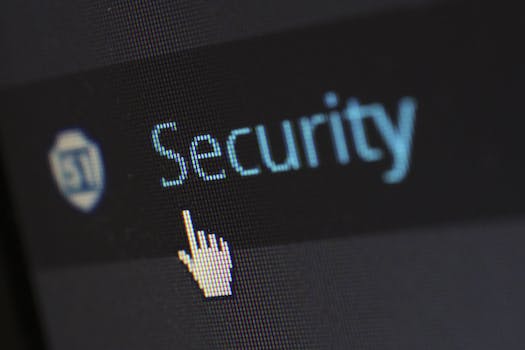-
Table of Contents
“Secure Your Digital Life: Follow Cybersecurity Best Practices for a Safer Online Experience”
Introduction
Cybersecurity is an ever-evolving field that is becoming increasingly important in today’s digital world. As more of our lives move online, it is essential to understand the best practices for protecting your online presence. This includes understanding the risks associated with online activities, such as phishing, malware, and data breaches, and taking steps to protect yourself from these threats. In this article, we will discuss the best practices for protecting your online presence, including using strong passwords, enabling two-factor authentication, and keeping your software up to date. We will also discuss the importance of monitoring your online accounts and taking steps to protect your personal information. By following these best practices, you can help ensure that your online presence is secure and protected.
How to Create a Secure Password and Why It’s Important

Creating a secure password is an important step in protecting your online accounts and personal information. A strong password should be difficult to guess and should not contain any personal information that could be easily obtained. Here are some tips for creating a secure password:
1. Use a combination of letters, numbers, and symbols. A strong password should include a combination of upper and lowercase letters, numbers, and symbols. Avoid using common words or phrases, as these can be easily guessed.
2. Make it long. The longer the password, the more secure it will be. Aim for a minimum of 8 characters, but the longer the better.
3. Avoid using personal information. Avoid using personal information such as your name, address, or birthdate in your password. This information can be easily obtained and used to guess your password.
4. Use a password manager. A password manager is a great way to store and manage your passwords securely. It will generate strong passwords for you and store them in an encrypted format.
It is important to create a secure password because it is the first line of defense against hackers and other malicious actors. A strong password can help protect your personal information and online accounts from being compromised. It is also important to use a different password for each account, as using the same password for multiple accounts increases the risk of your accounts being compromised.
The Benefits of Multi-Factor Authentication
Multi-factor authentication (MFA) is an increasingly popular security measure that is being adopted by businesses and organizations of all sizes. MFA adds an extra layer of security to user accounts by requiring users to provide two or more pieces of evidence to verify their identity. This makes it much more difficult for hackers to gain access to sensitive information.
The primary benefit of MFA is that it greatly reduces the risk of unauthorized access to user accounts. By requiring users to provide multiple pieces of evidence, it makes it much more difficult for hackers to guess or crack passwords. This is especially important for businesses and organizations that store sensitive customer data, as it can help protect them from data breaches.
Another benefit of MFA is that it can help reduce the risk of phishing attacks. Phishing attacks are a common form of cyber attack in which hackers send emails or messages that appear to be from a legitimate source in order to trick users into providing sensitive information. By requiring users to provide multiple pieces of evidence, it makes it much more difficult for hackers to impersonate legitimate users.
Finally, MFA can also help reduce the risk of account takeover attacks. Account takeover attacks are a type of cyber attack in which hackers gain access to user accounts and use them to commit fraud or other malicious activities. By requiring users to provide multiple pieces of evidence, it makes it much more difficult for hackers to gain access to user accounts.
Overall, MFA is an important security measure that can help protect businesses and organizations from data breaches, phishing attacks, and account takeover attacks. By requiring users to provide multiple pieces of evidence, it makes it much more difficult for hackers to gain access to sensitive information. For these reasons, businesses and organizations of all sizes should consider implementing MFA as part of their security strategy.
How to Spot and Avoid Phishing Scams
Phishing scams are a type of online fraud that can be difficult to spot. They are designed to trick you into giving away personal information such as passwords, credit card numbers, and bank account details. It is important to be aware of the signs of a phishing scam so that you can protect yourself from becoming a victim.
The first sign of a phishing scam is an email or message that appears to be from a legitimate source, such as a bank or online retailer. The message may contain a link or attachment that you are asked to click on. However, the link or attachment is actually malicious and can install malware on your computer or steal your personal information.
Another sign of a phishing scam is an email or message that contains spelling and grammar mistakes. Legitimate companies and organizations usually take care to ensure that their messages are free of errors. If you receive a message that contains typos or other errors, it is likely to be a scam.
It is also important to be wary of messages that ask you to provide personal information. Legitimate companies and organizations will never ask you to provide sensitive information such as passwords or credit card numbers via email. If you receive a message that asks for this type of information, it is likely to be a scam.
Finally, be wary of messages that create a sense of urgency. Scammers often try to pressure you into taking action by claiming that your account will be closed or your information will be lost if you do not respond immediately. If you receive a message like this, it is likely to be a scam.
By being aware of the signs of a phishing scam, you can protect yourself from becoming a victim. If you receive a suspicious message, do not click on any links or attachments and do not provide any personal information. Instead, contact the company or organization directly to verify the message.
The Importance of Keeping Your Software Up-to-Date
Software updates are an important part of keeping your computer secure and running smoothly. Keeping your software up-to-date is essential for protecting your data, preventing security breaches, and ensuring that your computer runs optimally.
Software updates are released by the software developer to fix bugs, improve performance, and add new features. These updates are designed to make the software more secure and reliable. Without them, your computer is vulnerable to security threats, such as viruses, malware, and hackers. Additionally, outdated software can cause your computer to run slower and become unstable.
It is important to keep your software up-to-date to ensure that you have the latest security patches and bug fixes. Many software programs have an automatic update feature that will download and install the latest updates for you. If your software does not have this feature, you should check for updates manually on a regular basis.
In addition to security and performance, software updates can also add new features and functionality. This can make your software more useful and enjoyable to use. For example, a software update may add a new feature that makes it easier to use or a new tool that makes a task simpler.
Keeping your software up-to-date is essential for protecting your data, preventing security breaches, and ensuring that your computer runs optimally. It is important to check for updates regularly and install them as soon as they are available. Doing so will help keep your computer secure and running smoothly.
How to Secure Your Home Network and Wi-Fi Connection
Securing your home network and Wi-Fi connection is essential for protecting your personal data and devices from malicious actors. With the rise of cybercrime, it is more important than ever to ensure that your home network is secure. Here are some tips to help you secure your home network and Wi-Fi connection.
1. Change the Default Password: The first step to securing your home network is to change the default password. Many routers come with a default password that is easy to guess, so it is important to change it to something more secure. Make sure to choose a strong password that is at least 8 characters long and includes a combination of upper and lowercase letters, numbers, and symbols.
2. Enable Encryption: Encryption is a great way to protect your data from being intercepted by malicious actors. Most routers come with encryption options such as WPA2 or WPA3. Make sure to enable encryption on your router to ensure that your data is secure.
3. Use a Firewall: A firewall is a great way to protect your network from malicious actors. Most routers come with a built-in firewall, but you can also purchase a separate firewall to add an extra layer of protection.
4. Update Your Router Firmware: It is important to keep your router’s firmware up to date in order to ensure that it is secure. Most routers will automatically update their firmware, but you can also manually check for updates.
5. Disable Remote Access: Many routers come with the option to enable remote access, which allows you to access your router from anywhere. However, this can be a security risk, so it is best to disable this feature.
6. Use a VPN: A virtual private network (VPN) is a great way to protect your data from being intercepted by malicious actors. A VPN encrypts your data and routes it through a secure server, making it much harder for malicious actors to access your data.
By following these tips, you can ensure that your home network and Wi-Fi connection are secure. It is important to take the necessary steps to protect your data and devices from malicious actors.
Conclusion
Cybersecurity best practices are essential for protecting your online presence. By following these best practices, you can ensure that your data is secure and your online presence is protected from malicious actors. This includes using strong passwords, enabling two-factor authentication, and regularly updating your software and applications. Additionally, it is important to be aware of the latest security threats and to take steps to protect yourself from them. By following these best practices, you can help to ensure that your online presence is secure and protected.















